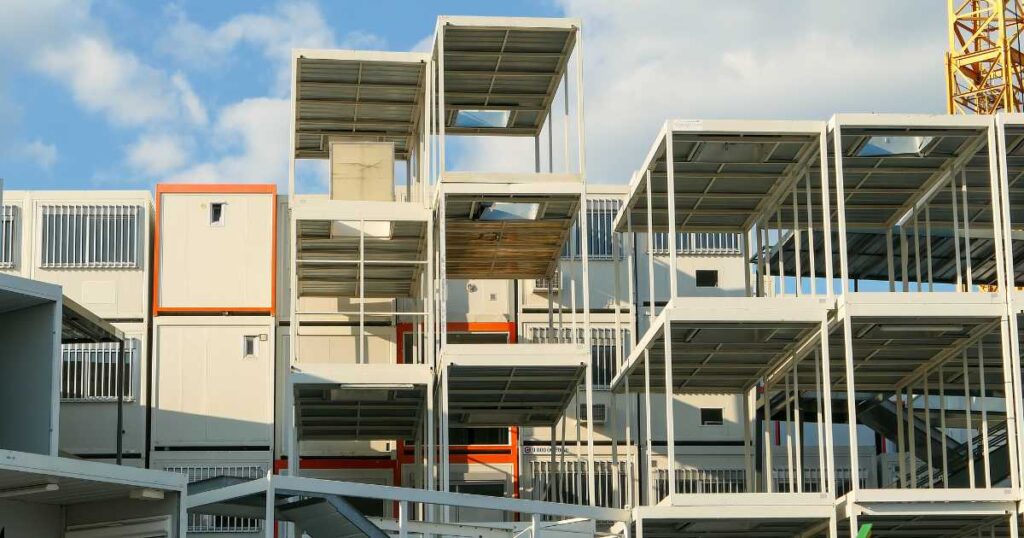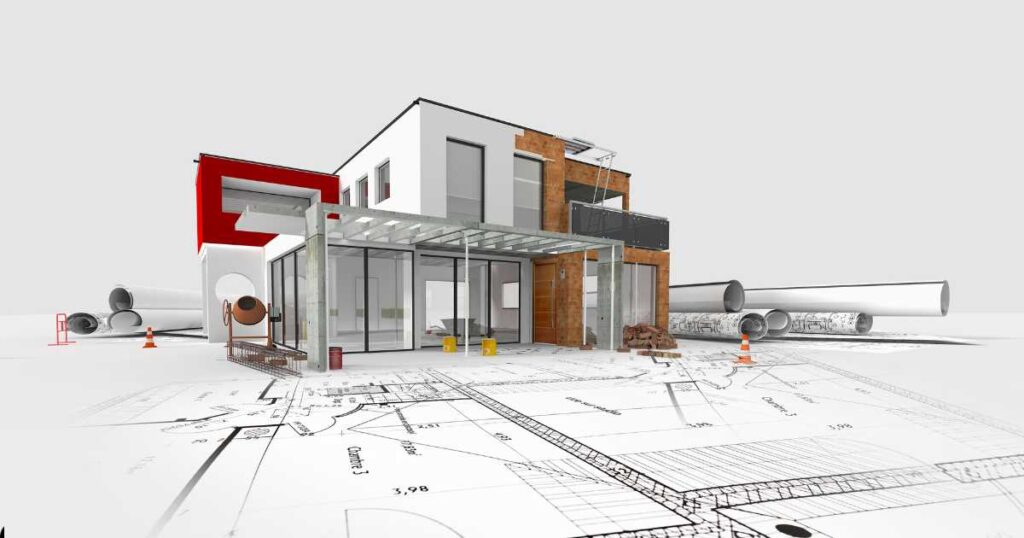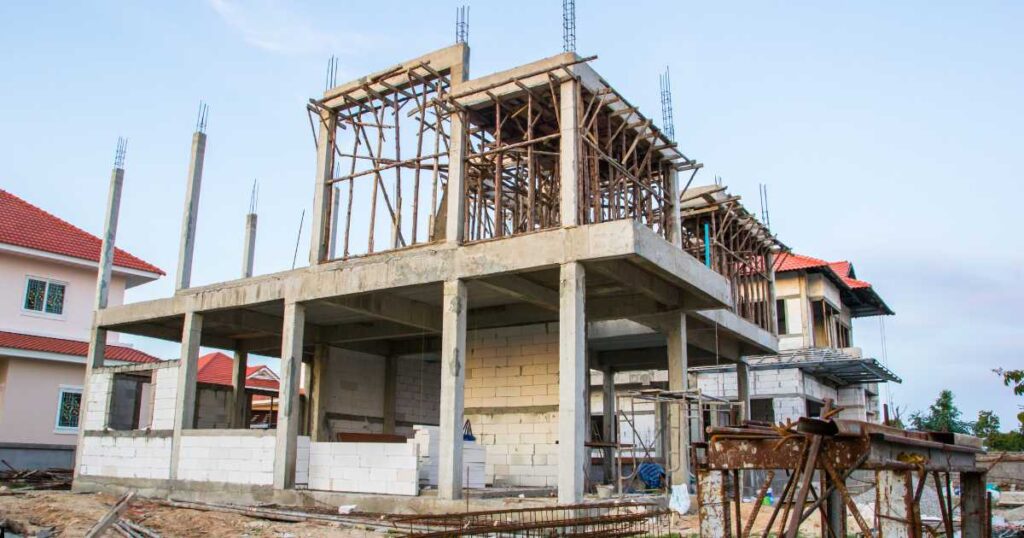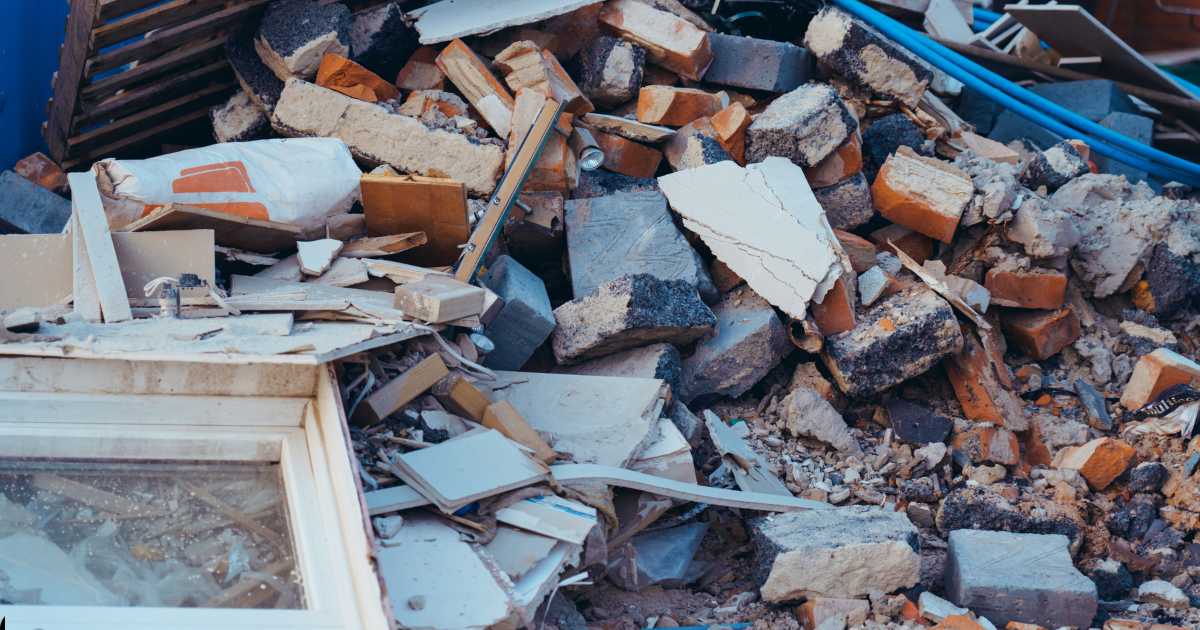Construction projects, whether residential, commercial, or infrastructure, have a profound impact on the built environment. However, traditional construction methods often generate significant amounts of waste, which not only harms the planet but also inflates the cost of the project.
As awareness of environmental challenges increases, there is a growing push to adopt more sustainable building practices.
The good news is that through strategic planning, innovative technologies, and smart building practices, it is possible to reduce construction waste, lower costs, and foster a more eco-friendly approach.
This guide outlines practical, effective measures to help you make smarter, greener construction decisions, ultimately benefiting both the environment and your budget.
Learn more about the environmental benefits of dumpster rentals and their role in successful recycling.
Reuse and Reimagine Materials
Construction projects often result in leftover materials like wood, metal, bricks, and tiles that are left unused at the end of a job. Instead of throwing these items away, they can be repurposed or reused in various ways:
Repurpose for Future Projects: Leftover materials, such as bricks, cement, and metal, can be stored for future projects, reducing the need to purchase new materials. For example, leftover wood can be used for custom furniture, doors, or frames in future construction jobs, or metal can be saved for small-scale projects.
Create Custom Solutions: Many leftover materials can be used in creative and functional ways. For instance, unused wood can be transformed into shelving units, while old windows can be used in greenhouses or as garden decorations. Repurposing materials not only saves money but also helps conserve natural resources.
Donate or Sell Leftovers: Items that might not be immediately useful to you can be donated or sold to others. Non-profit organizations, schools, or even small contractors may find value in surplus materials. For example, leftover cement can assist a local community with small-scale construction, while excess paint can be donated to groups that refurbish public spaces. By repurposing, donating, or selling materials, you help reduce the environmental impact of construction, cut costs, and contribute to a more sustainable, circular economy. For instance, disposing of hazardous materials responsibly can also prevent environmental damage.
Prefabrication: Build Smarter, Not Harder
Prefabrication, the process of constructing building components offsite in a controlled factory setting, offers numerous benefits to sustainability and efficiency:

Less Waste: Prefabrication ensures materials are cut and used with precision, significantly reducing material waste. Instead of dealing with raw materials onsite, prefab elements such as walls, floors, and roofs are pre-manufactured, leading to more accurate quantities of resources.
Faster Construction: By creating components offsite, the construction process is accelerated. Once the prefab pieces arrive on-site, they can be assembled quickly, reducing the total construction time.
Bulk Buying Savings: Prefabrication often involves purchasing materials in bulk, which lowers material costs and ensures a more efficient use of resources. The uniformity in prefabricated parts also reduces errors and mistakes, saving time and resources.
Improved Quality Control: Prefabricated components are manufactured in a controlled setting, guaranteeing a higher level of quality than the unpredictable conditions on a construction site. This leads to fewer defects and a more durable finished product. Imagine prefabrication like putting together a puzzle—each piece fits seamlessly, eliminating excess waste. It’s a cost-effective, waste-reducing method that enhances both efficiency and quality.
Lean Construction: Maximizing Efficiency, Minimizing Waste
The Lean Construction method focuses on maximizing the value of construction by reducing waste and improving workflows. It incorporates several key strategies:
Eliminate Non-Essential Steps: In lean construction, every task is evaluated for its value to the project. Unnecessary steps are eliminated to save time and resources. For example, processes that don’t directly contribute to the structural integrity of a project—such as excessive measurement or redundant checks—are streamlined or eliminated.
Precise Resource Usage: Lean construction emphasizes using exactly the right amount of materials—no more, no less. This prevents the over-ordering of resources, reducing surplus and waste. The precise use of resources also minimizes environmental impact and lowers costs.
Fewer Mistakes, Less Waste: In lean construction, planning and preparation are key. By investing time in proper planning and training, workers can avoid mistakes that would require rework. For example, poor installation of materials can lead to damaged goods that need replacing, creating waste.
Efficient Workflow Organization: Lean construction emphasizes carefully planned workflows, ensuring the right materials, tools, and workers are at the right place at the right time. This reduces delays, minimizes downtime, and eliminates wasteful idle periods during construction.
Continuous Improvement: Lean construction isn’t a one-time effort. It requires ongoing evaluation of processes and performance to identify areas for improvement. This includes post-project reviews and feedback to streamline future projects.
By focusing on efficiency, reducing waste, and minimizing errors, lean construction allows builders to focus resources on what truly matters, leading to better outcomes with less environmental impact.
Smart Planning with Advanced Technologies
Advances in digital technology have transformed construction planning, offering tools that make projects more efficient and environmentally friendly. One of the most powerful tools is Building Information Modeling (BIM), a digital process for designing, constructing, and managing buildings:

3D Modeling for Accurate Planning: BIM allows you to create detailed 3D models of your construction project, which helps visualize the entire build before the first brick is laid. These models provide precise calculations of material quantities, ensuring you order exactly what you need and avoid waste.
Predict and Prevent Issues: BIM allows for early detection of potential design flaws or construction clashes, enabling you to solve problems before they turn into expensive delays or material waste. This “problem-solving” approach is akin to troubleshooting a video game level before facing obstacles.
Enhanced Communication and Collaboration: With BIM, all stakeholders—architects, contractors, and engineers—have access to the same digital model, which improves collaboration and reduces the chance of miscommunication or errors. This ensures that everyone is on the same page, preventing costly mistakes and changes on-site.
By using advanced technologies for planning and communication, you can reduce waste, enhance efficiency, and make smarter decisions before the construction even begins.
Separate and Recycle Waste
Efficient waste management is a cornerstone of sustainable construction. By sorting and separating materials, you make recycling easier and more effective:
Organize Materials by Type: Set up designated areas on-site for different types of waste, such as concrete, metal, plastic, and wood. This makes it easier to separate and recycle materials rather than sending them all to the landfill.
Recycle Materials: Many construction materials—such as metals, glass, and concrete—can be recycled and repurposed into new products. For example, scrap metal can be melted down and reused, while concrete can be crushed and turned into aggregate for future projects.
Minimize Landfill Contributions: Only non-recyclable materials should end up in landfills. As construction waste is sorted on-site, more material is repurposed, which reduces the environmental footprint and contributes to a circular economy.
Sorting and recycling construction waste is a critical step toward minimizing environmental impact and creating a more sustainable building process.
Choose Eco-Friendly Materials
Selecting eco-friendly materials is one of the simplest ways to ensure a construction project is sustainable. Opt for materials that are not only environmentally responsible but also durable and safe:

Recycled and Reclaimed Materials: Use materials like reclaimed wood, recycled steel, and salvaged bricks to reduce the need for new resources. These materials can be used to create high-quality, aesthetically appealing buildings.
Sustainable and Renewable Resources: Bamboo, hempcrete, and cork are sustainable materials that regenerate quickly and have a minimal environmental impact.
Low-Impact Finishes: Choose paints, finishes, and adhesives with low volatile organic compounds (VOCs), which are less harmful to the environment and to human health. These products help improve indoor air quality and reduce the project’s carbon footprint. By making thoughtful material choices, you can enhance the environmental sustainability of your project, reducing both waste and the need for resource-intensive building practices.
Use Energy-Efficient Machines
Energy-efficient machinery not only reduces your carbon footprint but also saves on operational costs:
Energy-Efficient Equipment: Machines that use less fuel or electricity, such as hybrid or electric cranes, forklifts, and excavators, contribute to lowering energy consumption and reducing greenhouse gas emissions.
Smart Monitoring Systems: Some equipment features smart technologies that track energy usage and optimize performance, helping to reduce waste and improve fuel efficiency. By integrating energy-efficient machines into your construction process, you save money, reduce emissions, and contribute to a more sustainable construction industry.
Educate and Inspire Your Team
Sustainability in construction relies on the active participation of everyone involved in the project. By fostering a culture of education and awareness, you ensure that sustainability goals are met:
Workshops and Training: Offer training sessions for workers and managers to teach them about waste reduction strategies, sustainability practices, and new technologies.
Set Clear Goals: Establish specific, measurable sustainability goals and involve your entire team in achieving them.
Celebrate Achievements: Recognize and reward sustainable efforts by your team. Highlight successes in waste reduction, energy savings, or the use of eco-friendly materials. An informed and motivated team is the key to making sustainability a core part of the construction process, leading to more efficient and environmentally responsible outcomes.
FAQs on Reducing Construction Waste
How can I reduce construction waste without affecting the quality of the build?
By adopting strategies such as reusing materials, prefabricating parts offsite, and using lean construction principles, you can minimize waste while maintaining high standards of quality. Careful planning, precise resource use, and advanced technologies like BIM also help improve efficiency and reduce waste without compromising on the final product’s quality.
What are the benefits of prefabrication in reducing waste?
Prefabrication ensures that materials are used with precision, reducing the chances of waste. As components are built in a factory setting, there is less material wastage compared to traditional on-site construction methods. It also speeds up the construction process, which reduces the amount of time materials are exposed to potential damage, thus minimizing waste.
What types of materials can be recycled or reused during construction?
Common materials that can be recycled or reused include concrete, steel, bricks, wood, and glass. These materials can be repurposed for future construction projects or recycled into new products, significantly reducing waste. Sorting waste into designated piles on-site makes recycling easier and more efficient.
How can technology help in reducing construction waste?
Technologies like Building Information Modeling (BIM) allow builders to plan and visualize construction projects in detail before construction begins. This helps identify potential issues early, preventing costly mistakes and reducing material waste. Smart machinery can also optimize energy use, minimizing fuel consumption and reducing environmental impact.
What are the most eco-friendly materials to use in construction?
Eco-friendly materials include recycled steel, reclaimed wood, bamboo, cork, and hempcrete. These materials are sustainable, renewable, and have a minimal impact on the environment. They also offer durability and aesthetic appeal while contributing to energy efficiency and reducing the need for new natural resources.
How can I ensure that my construction team is on board with waste reduction goals?
Educating your team through training sessions and workshops is key. Establish clear, measurable goals for sustainability and waste reduction, and encourage active participation in the process. Recognizing and rewarding efforts to reduce waste can also motivate the team to adopt greener practices.
Conclusion:
Reducing construction waste is not just about cutting costs—it’s a crucial step in building a more sustainable future. By embracing strategies such as reusing materials, utilizing prefabrication, adopting lean construction techniques, and integrating smart technologies, we can reduce environmental impact, lower costs, and increase the overall efficiency of construction projects.
The construction industry has a significant role to play in the global effort to reduce waste and conserve resources. By being mindful of the materials we use, the processes we follow, and the technology we implement, we can create buildings that not only serve their purpose but also contribute to a healthier planet.
Incorporating sustainable practices doesn’t require drastic changes overnight. Start with small steps, such as reusing leftover materials or adopting energy-efficient machinery, and gradually build toward more extensive waste-reduction strategies. Together, we can transform construction into a more intelligent, eco-friendly, and cost-effective industry.
